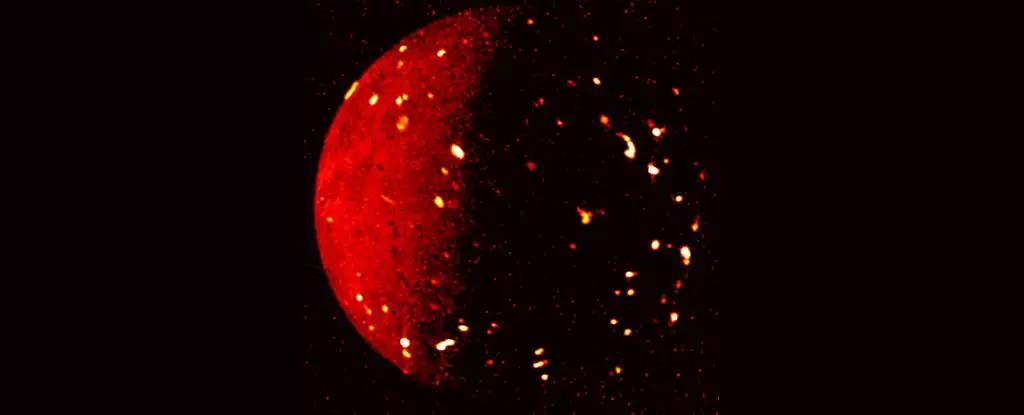Jupiter’s moon Io is a celestial body like no other in the Solar System. Known for its intense volcanic activity, Io boasts around 150 active volcanoes erupting at any given time out of the 400 or so present on its surface. This volcanic hub continuously spews lava and gas, creating a captivating display of immense geological phenomena.
The volcanic activity on Io is a result of a complex interplay of gravitational forces. The moon’s orbit around Jupiter is not perfectly circular, leading to varying intensities of attraction between the two bodies over time. Additionally, the gravitational pull exerted by the other Galilean moons – Callisto, Europa, and Ganymede – further contributes to the stress experienced by Io’s interior. This amalgamation of gravitational forces generates the heat that fuels the moon’s volcanic eruptions, making Io a hotbed of geological activity.
Recent advancements in space exploration, particularly through the Juno probe, have provided us with unprecedented insights into Io’s volcanic landscape. Juno’s Jovian Infrared Auroral Mapper (JIRAM) has captured high-resolution images of Io, revealing lava lakes nestled within caldera-like features across the moon’s entire surface. This in-depth analysis has shown that approximately 3 percent of Io’s surface is occupied by these molten lava lakes, shedding light on the dominant form of volcanism taking place on the moon.
The observations conducted by Juno have unveiled the intricate dance of lava on Io’s surface. The infrared data collected by JIRAM showcases lava lakes with a distinctive structure – a ring of exposed liquid lava encircling the edges, with a solidified crust in the center. The formation of high lake walls surrounding the bowl-shaped patera further illustrates the dynamic nature of Io’s volcanic processes.
As scientists continue to analyze the data received from Juno’s close flybys of Io, new insights into the moon’s volcanic dynamics emerge. The observations indicate that magma reservoirs beneath the surface feed the lava lakes, causing them to fluctuate in height as the magma rises and falls. The interaction between the rising crust and the lake walls results in the iconic lava rings seen in these volcanic features.
Jupiter’s moon Io stands as a testament to the raw power of geological forces at play in the cosmos. Through the remarkable advancements in space exploration made possible by missions like Juno, we are able to unravel the mysteries of Io’s volcanic landscape and gain a deeper appreciation for the wonders of our universe. As we delve further into the secrets of Io’s volcanic inferno, we are poised to uncover even more fascinating revelations about the dynamic processes shaping this enigmatic moon.


Leave a Reply